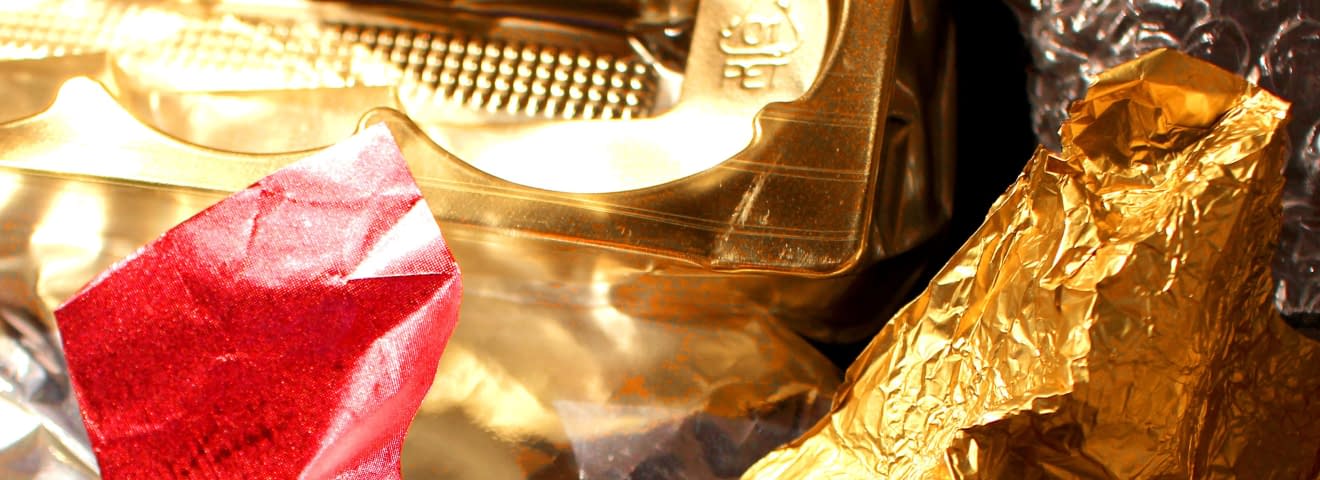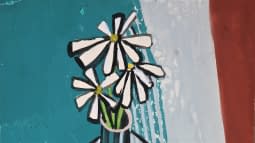Waste and Art? On the Utilization and Refinement of Human Remains in Art
Waste and Economy
The earth and our treatment of it is one of the biggest social issues of our time. All of humanity depends on it and should therefore have an interest in its well-being. Yet the immediate urgency seems to be lost on many. Adapting human behaviour to save the planet seems too abstract. Is it because we recover quickly from disasters, because we are used to bad news, and because we block out things that seem unbearable? Including the mass of daily waste, the symbol of our consumption. Is this connection too far removed from our personal daily lives because we don't have the mountains of waste constantly in front of our eyes? Because waste disposal facilities usually operate far away from our lives, even though they are so closely linked to one another - out of sight out of mind. After all, who wants to be constantly confronted with it? So how can we reflect on it if we repress the unpleasant? Perhaps art can help us deal with the vast amount of waste and problematic consumerism and help us find new ways to deal with it. Artists can bring this human by-product to mind in a variety of ways, and hopefully also make us take on responsibility.
The writer, art historian and philosopher Georges Bataille already dealt intensively with the question of waste in his writing «The Accursed Share» («La Part maudite», 1949). Even though contradictions appear in his writing and he sees no escape from the cycle of waste, it seems important that he identifies the human desire for luxury as the basic problem. This means the consumption of riches and the surplus of energy comes before questions of production for us humans. For this reason, more is produced than is actually needed. Humans try to consume the products in order to make room for new ones. But at some point this is no longer feasible, so that there is no longer a place for the surplus: «In every system there comes a point at which the surplus energy can no longer be used for growth and must accordingly be used unproductively, i.e. wasted uselessly» (Original quote: «In jedem System kommt der Punkt, an dem die überschüssige Energie nicht mehr dem Wachstum zugeführt werden kann und entsprechend unproduktiv verwandt, d.h. nutzlos vergeudet werden muß» from Metzler Philosophen-Lexikon). The superfluous products are therefore hidden or ostracized. The overproduction and the handling of it therefore elude all reason. Production or modern capitalism thus reveals itself as destruction. Man seems to have developed a dependence on things and has thereby become a thing itself, according to Bataille. Gift-giving is thus a common squandering of this surplus. Especially since humankind has become dependent on the creation and management of products through economics. Must the human being, who has the urge to create things, find back to his basic needs and shake off the irrationality of intoxication and excess?
Waste in the Art
Everyday objects, waste, scrap or industrial parts already found their way into art at the beginning of the 20th century, for example with Kurt Schwitters, Marcel Duchamps. Later, Jean Tinguely and Niki de Saint Phalle also dealt with the subject, or the American artist Mierle Laderman Ukeles, to name just a few examples. How is this spending of resources given space and form in art today in order to reflect on this problem? The material and its shaping are, after all, just as much a basic requirement of art. Can it itself deal responsibly with resources? Its great advantage is at the same time its creative process. Thus, it can create from something already used something else, something «new». In this way, the hierarchy of materials also undergoes a change. Gold, bronze or noble fabrics should finally make an art object (more) valuable and guarantee an immortality of the object. By using remnants in art, i.e., «material foreign to art», which is considered less valuable, this claim is radically questioned. The material is thus torn from its original context of use and integrated into a new context associated with art. As a result, material that was considered worthless suddenly becomes something noble and valuable.
Waste is what we no longer use, whether it is defective, used up or superfluous. Through this devaluation, the product sometimes loses the connection to its original function. Embedded in an art object, this former function can often still be sensed, sometimes stronger, sometimes only as a loose trace. But we are used to certain materials for certain purposes and associate them with them. For example, in the case of materials such as plastic, the industrial production and the variety of uses stick to the material. Precisely because this material comes into focus as the basis of industrial production, the space opens up for questions about its own principles. As the object made of waste is now also presented as a work of art, these two references become inseparably interwoven. On the one hand, the material takes on a new function, but as a trace it also refers to its former meaning. The revaluation happens in that it is no longer considered a pure industrial product, but now also acts as an art object. Depending on the artwork, a completely new aesthetic character can be created, which at first glance no longer refers to the waste. Thus, the consumed resources appear even less as waste, and instead only as valuable art. Waste in art, however, can also be a reflection on aesthetics, because art does not necessarily have to be «beautiful». Accordingly, what is discarded also has its own aesthetics. Thus, we must question how we define the value of resources. For even in the case of works in which waste is not recognizable as a material at first glance, a closer look at and examination of the work leads to an awareness about the origin of the structure of the art object and thus also of the material.
An art24 artist who deals with the subject is Arto Forma. He creates his art as best he can from materials that have already been produced for something else. In this way, he tries to minimize the production of new materials for his creative process and counteract overproduction. The foundations of his works are disposal materials, recycled materials, second-hand products or donations. These raw materials, which are considered unsuitable and no longer valuable, thus experience a revaluation, as well as a new meaning, as he creates his abstract artworks from them, such as «atomare».
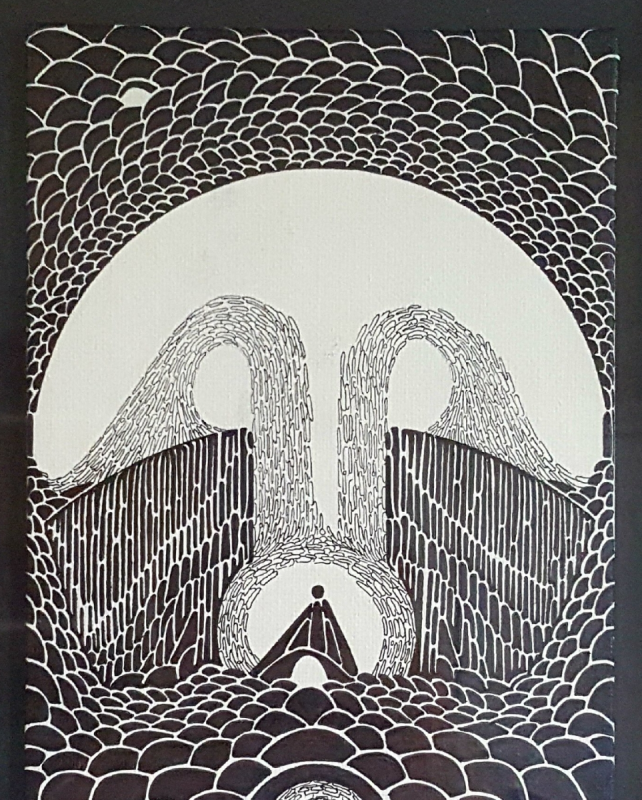
He describes the motif of the work as «a repeating cycle of specific damage, which descends on a human being as rain.» This can be understood in different ways, for instance as psychological damage raining down on a person. But this can also be related to the structural processes of our society, which are linked to consumerism and harm us (in)directly. Considering the small size of his works, one realizes how much usable material is thrown away every day and that an unbelievable number of artworks could be created from it, for which there are probably too few walls and rooms to show them all.
Another art24 artist who deals intensively with questions of value, the environment, resources and the messages that materials send out is Verena Kandler. She uses, for example, old posters, leftover packaging or other objects that have been thrown away and combines them with classical painting. In this way, she refers to the human traces that we leave behind every day and are thus inscribed in her artworks as human relics and documents of time. Depending on the type of waste and how she has incorporated the elements, the artwork can thereby also lose its traditional claim to stability and eternity. Especially with products like plastic, we know about its properties. While the material is very durable and therefore remains in circulation for a correspondingly long time as microplastic, it is precisely for this reason that it becomes brittle and slowly decomposes - and thus the artwork it forms is also ephemeral. In this way, she brings to mind a problem that humanity is only slowly beginning to address. She calls for a joint search for solutions for the future and asks how we want to deal with these long-lasting materials so that we no longer harm the environment. This is the case, for example, in her work «Sympioesis» (2022).
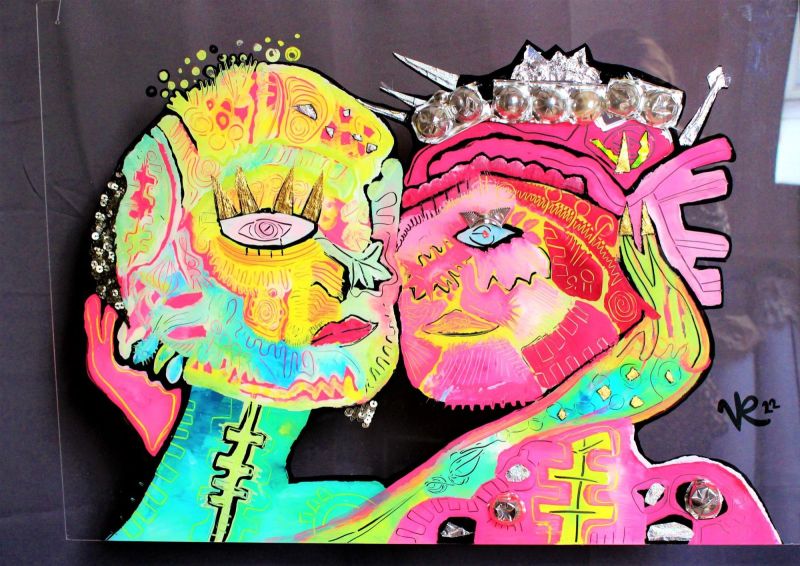
The artist frequently uses fabric elements in her works. This creates a reference to clothing and the fashion industry. Clothing is often very personal and an expression of our individuality and attitude to life. It thus takes on a large role in the realm of consumption. As the fabric adapts to our body shape, clothing always contains a personal imprint of the individual body, which is thus inscribed in the work and reminds us of our transience. A work that combines several of these aspects at once is «Standpunkt (TECH NO BODIES)» (2022) (Engl.: «Standpoint»).
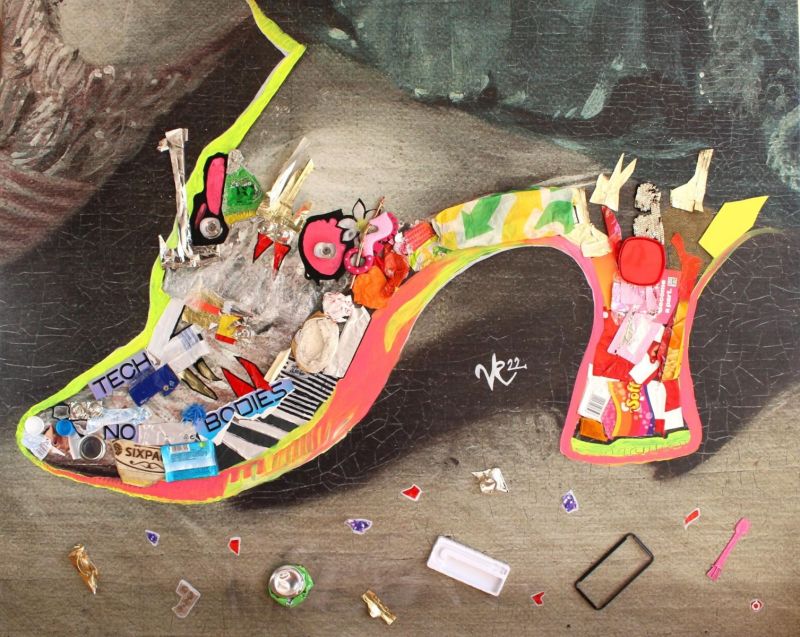
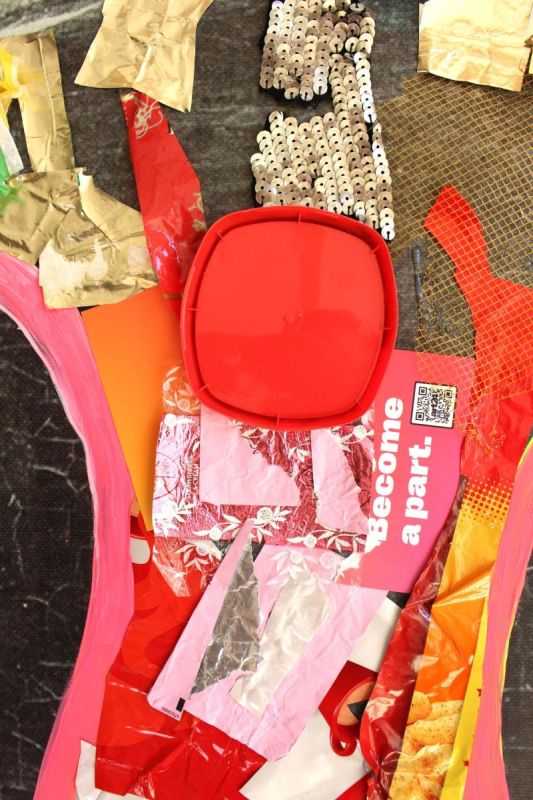
In this way, she also addresses another waste problem. Our textile waste often ends up in huge mountains of waste that are almost impossible to manage, and which cause significant problems and harm to people and the environment, mostly in African countries. The protective nature of clothing for our bodies thus also takes on a threatening, destructive character. In Kandler's works, however, the leftover material is also integrated in such a way that the waste character is transformed and something valuable and conscious is created. Her works become narrative through the documents of time and challenge us to rethink history. We are asked to question how we treat our legacies, what we choose to consume, and what we bring about by consuming products. The material used itself already sends a message and connotations, but also refers to the natural resources of the earth from which they were created. Thus, human waste suddenly becomes valuable again. Thus, also in context as the basis of art. Waste becomes as noteworthy and valuable as oil paints, gold, bronze, fine fabrics or marble are. By recycling these materials, the artist thus establishes a link between the past and the future. In other words, we should make our lives less dependent on these materials in order to do less harm to the environment. «How do I treat the earth's resources?» is hence the guiding question.
Artist Sam Drukker also explores the meaning of old material. His picture carriers often represent unconventional media. For example, he uses weathered canvas or old pieces of wood as painting surfaces. He uses them to paint surfaces that have a prehistory independent of his paintings, adding another layer of meaning to them. Thus, Drukker incorporates the past into his artwork in order to relate to it and appreciate it. This allows us to reflect on the current state of the world. We are asked to wonder how the past has affected us culturally. The life of a material is thus directly linked to the present of human beings and also placed in the context of the question of value.
So, how do we deal with the fact that we leave behind too many traces of our existence? As the word «waste» suggests, we can also subject our values to devaluation and assign a declining weight to consumption. So, making a gift, seen through this perspective, is not just a nice gesture. The decision what and if we give something is highly political and influences the lives of many people and our environment. So, the holiday season should also challenge us to redefine our gesture of giving. Instead of buying something newly produced, we could also give things that have already been in circulation, that have longevity, or that have been produced in a particularly gentle way. Art in particular is also very personal and therefore a wonderful gift. It enables an engagement with life on different levels. In this sense, sustainable art can also be given as a gift to an art lover. For example, art that consists of recycled materials and which has been given a new life as a work of art through this upcycling - even if it is probably the wish of these artists, there would be as little waste as possible, so that no art has to be made from it. But this is not (yet) the case and thus it is a form to deviate from the world of consumption and to stimulate and to live out alternative ways of dealing with this. It sends a beautiful message that is not only caring towards the person receiving the gift and the artist, but also towards the people who produce these products under poor conditions and whose lives suffer as a result, as well as towards the environment that forms our basis of survival. This does not radically banish waste from our lives, because it never disappears. But it reminds us in the form of art of our responsibility to society and gives us strength.
Recommendation: The impressive exhibition «Territories of Waste» runs at the Museum Tinguely in Basel until January 23, 2023. In many of the works, art and documentation merge. The exhibition catalouge, which is well worth reading, can be downloaded free of charge from the website.
Literature references:
Bergfleth, Gerd. Bataille, Georges. Metzler Philosophen-Lexikon, in: spektrum.de. (https://www.spektrum.de/lexikon/philosophen/bataille-georges/33).
Gerke, Tano. Lob der Verschwendung. Zu Batailles Theorie der Ökonomie, in: anbruch. Magazin für Kultur & Künftiges, (https://anbruch-magazin.de/batailles-theorie-der-oekonomie/).
Kolk, Katrin (2019). Aggregatzustände: Das Material der Kunst von Abfall bis Zement. Hannover: Sprengel Museum.
Reimann, Sandra Beate (2022). Territories of Waste: Über Die Wiederkehr des Verdrängten: on the Return of the Repressed. Basel: Museum Tinguely.
Image credits:
Fig. 1: Arto Forma, atomare, ink on painted cardboard, 18 x 13 cm, photo: art24.
Fig. 2: Verena Kandler, «Sympioesis», mixed media, 67 x 50 x 2 cm, 2022, photo: art24.
Fig. 3: Verena Kandler, Standpoint (TECH NO BODIES), mixed media, 160 x 130 x 3 cm, 2022, photo: art24.
Fig. 4: Verena Kandler, Standpunkt (TECH NO BODIES), detail, mixed media, 160 x 130 x 3 cm, 2022, photo: art24.
